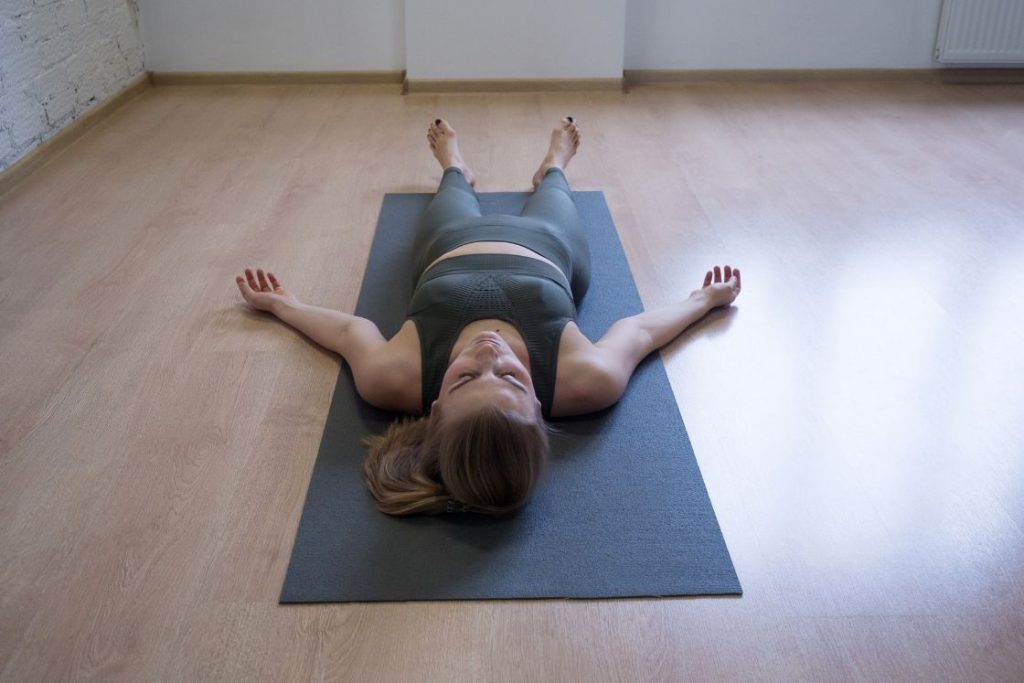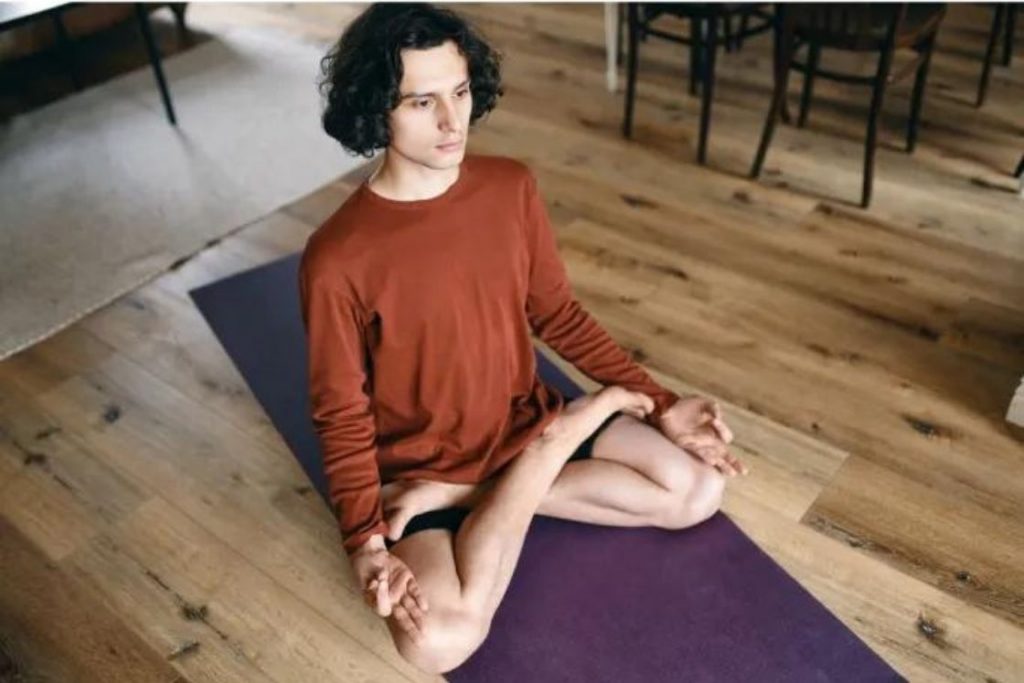
One of the most common reasons people go to the doctor or stay away from work is back pain. If you suffer from pain, you may reach for a pain pill more often.
However, you can take steps to prevent or relieve most back pain. Simple home remedies like meditation and proper body movements can often heal your back and keep it in good shape.
Meditation is one of the best strategies for relieving pain and lowering overall stress levels.
Causes of Back Pains
- Improper posture during sleeping, driving, sitting, or continuous sitting for long hours.
- Misalignment of the spine.
- Sudden awkward movements.
- Excessive heavy lifting.
- Excessive body weight.
- Sedentary lifestyle.
- Pregnancy.
- Weak muscle strength.
How Does Meditation Relieve Back Pains?
Meditation activates the parasympathetic nervous system, which is associated with relaxation and suppresses the sympathetic nervous system, which is connected with the “fight or flight” reaction. This could be one of the ways meditation can help with the pain.
Meditation assists you to release stiff back muscles by allowing you to relax and inspect in with yourself. It can also help you cope with pain by helping you to focus on something besides discomfort.
If you’re stressed, your body releases stress hormones, which cause inflammation and increase pain in already inflamed muscles, tissues, and joints. Meditation redirects your attention toward something calm and quiet, which helps to reduce inflammation and pain.
When you meditate and establish a calmer state of mind, your body does not release stress hormones into your bloodstream. Meditation can aid in the release of endorphins, which are natural pain relievers. You’ll feel less pain since the muscles and tissues are relaxed, and your brain is calmer.
It isn’t that you overlook your back pain altogether; it’s just a coping mechanism.
The principles and practices of mindfulness are said to assist people to manage stress, anxiety, depression, and other mental health disorders. People who practice meditation can learn to recognize their feelings without reacting or becoming overwhelmed. And that could help them to cope with their chronic back pain.
Also Read: 11 Best Yoga Poses for Back Pain
What Does Science Say?
The above findings have not only been reported by practitioners but have also been noted in various studies done to assess the efficacy of meditation for chronic back pains.
In a 2015 study, female patients with nonspecific chronic lower back pain were asked to undertake 8 mindfulness-based stress reduction or MBSR sessions. They were assessed after the completed sessions and then after 4 weeks of this intervention.
These patients reported a substantial reduction in pain severity and thereby an improvement in their physical and mental quality of life.
Another important large-scale study was published in 2016. The paper published its findings on studying the effects of MBSR and CBT (Cognitive Behavior Therapy) on lower back pain in 342 participants aged 20-70 years.
The assessment was done twice – at 26 weeks and 52 weeks. It was noted that the CBT group did not show much improvement in pain intensity and some mental health measures as compared to the MBSR group. What was noteworthy was that even at 52 weeks, the MBSR groups continued to show improvements.
However, a 2017 meta-analysis also concluded that MBSR may be a good alternative for short-term therapy. To prove its efficacy in long term, more clinical trials need to be conducted to compare versus active treatments.
Mindfulness Meditation for Chronic Back Pain
People can use mindfulness meditation to help them refocus their mind and body in the present moment without being judged. People who suffer from chronic back pain may benefit from a daily mindfulness practice since they may have negative or worrying thoughts about their discomfort.
These thoughts are normal, but they can alter your mood and make your suffering worse. Being focused on relaxing the body and experiencing the breath and body feelings as they are will aid with pain management as well as depression and anxiety symptoms.
While working with a mindfulness teacher to understand the concept of mindfulness is indeed beneficial, tools are now freely available to the general public. There are a variety of free or paid books, CDs, and smartphone and tablet apps available to help you learn and practice mindfulness meditation to manage pain and other diseases.
Many mindfulness practitioners offer programs particularly designed to help people handle their pain. Several current mindfulness meditation-based practices are based on the Mindfulness-Based Stress Reduction (MBSR) program, which consists of eight weekly group sessions led by competent, certified instructors, along with daily at-home practice.
Participants learn a variety of mindfulness meditation techniques during the program, which includes long, formal techniques such as body scan, breath, and sitting meditation along with shorter practices like mindful walking, mindfulness of daily activities, and other mini-meditations that may be especially useful for dealing with hardships of daily life.
How to Meditate?
- Sit or lie down comfortably in a quiet location with few distractions. Focus on your breath while closing your eyes.
- Breathe normally and pay attention to the rhythm of your breaths. Focus your mind on getting rid of bodily tension as you exhale softly on deeper breaths.
- Observe your thoughts as they flow through your head. Don’t pass judgment on the thoughts or get caught up in them. Simply keep an eye out for any patterns.
- Redirect your attention back to your breathing when you sense your thoughts wandering.
- Start with a five-minute meditation session. Continue by meditating a couple of times a week and gradually increase to 15 or 20 minutes.
Additional Techniques to Enhance the Effect of Meditation
Meditation is an effective method that can help with chronic back pain by promoting relaxation, reducing stress, and increasing body awareness. However, incorporating additional techniques can further enhance the effectiveness of meditation in managing and reducing back pain. The following are three techniques that can be combined with meditation to increase its benefits:
A. Gentle stretching and yoga exercises:

Gentle stretching and yoga postures can complement meditation by promoting flexibility, improving posture, and strengthening the muscles that support the spine. When practiced mindfully, these movements can help release tension and restore balance to the body. Regular yoga practice can also improve body awareness and overall physical well-being, which can contribute to long-term back pain relief.
B. Progressive Muscle Relaxation:

Progressive muscle relaxation is a technique that systematically tenses and relaxes different muscle groups in the body. By consciously tensing and releasing muscles, you can relieve tension and induce deep relaxation throughout the body. This technique can be especially beneficial for muscle spasms or tension in the back. Combining progressive muscle relaxation with meditation allows for deeper relaxation and release of muscle tension.
C. Guided Imagination and Visualization:

Guided imagination and visualization use the power of the mind to create positive mental images and experiences. By imagining a calm and pain-free back, you can positively influence your perception of pain and create a sense of ease and comfort. Guided imagery can be practiced using recordings or under the guidance of a meditation teacher. Combining guided imagery with meditation can help reframe your relationship with pain and achieve a more relaxed state.
Back Pains due to Meditation
As weird and ironic as it may sound, you can also experience back pains from improper meditation positions. It’s possible to have an aching or sore lower back while meditating, although it’s not always the case. Sitting meditation demands tremendous spinal sturdiness, and you may experience lower back pain until you gain that strength.
We can learn to sit comfortably with learning and awareness. A balanced pelvis is essential for good sitting posture. The spine is forced to deviate from its natural position in order to stay upright unless the pelvis is in a neutral position.
We must also give heed to the positioning of the thighs in order to appreciate meditation and sit comfortably in chairs. The pelvis tilts backward and the lower back rounds as soon as we extend the knees to the same height as or higher than the hip sockets.
When we sit with our backs rounded, the fronts of the discs compress and flatten, causing strain on the spinal nerves, which can lead to pain and malfunction of the spinal muscles.
To correct your meditation position, take care of the following points:
- Pelvis Position
Elevating the pelvis is the most critical step in improving your sitting position. Begin with three blankets that have been folded into a rectangle or a yoga cushion. Sit cross-legged on the stacked blankets’/cushion’s corners, with your buttocks on the covers and your thighs off. Consider how your lower back feels for a second. At the waist, it should be gently arched inward.
- Arm position
Place your hands on the tops of your thighs, close to your belly, and let your fingers relax. Make sure there’s enough gap under your armpits to hold an egg.
Lay a folded blanket under your hands to elevate them if your forearms are almost too vertical. There will be less weight pulling through the arms and stressing the shoulders and neck when the forearms are more horizontal.
- Head position
Adjust your head so that you should be gazing straight, then gently lower your head such that your eyes fall three feet in front of you on the ground.
Sitting will become not only enjoyable but also a source of pleasure and ease once you understand to sit with the spine tall and curved and the pelvis in a neutral position.
Conclusion
Chronic back pain can be frustrating and interfere with daily activities. By altering behavior, meditation can change the anatomy of the brain. The pain you experience on a regular basis will lessen in intensity.
Meditation treats pain on all levels and reduces anxiety associated with it, making people with chronic back pain happier, more in control, and less deeply invested in their condition.




